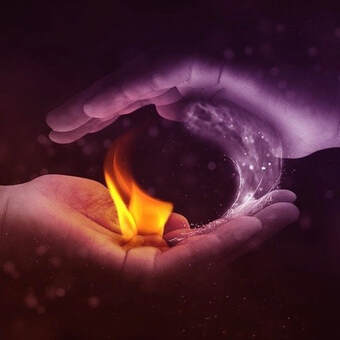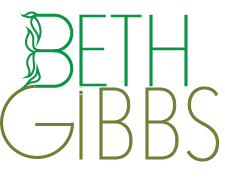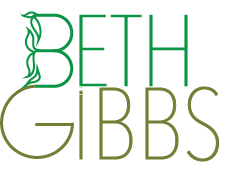ENLIGHTEN UP! a blogSelf-awareness stories: lighting our way to clarity, contentment and resilience in a complicated world.
|
 “Energy cannot be created or destroyed, it can only be changed from one form to another.” — Albert Einstein Change requires making a transformation in form, appearance, or character. Knowing how to transform our everyday energy states is key to developing balance and resilience. For example, if we feel pooped, exhausted and drained, our supply of energy is deficient and we need to find a way to light our fire. If we feel wired, and fired up with a mind that’s racing a mile a minute on overload, our energy is excessive and we need to find a way to slow the burn. In either case, our energy is out of whack and we need a life hack to get it back into balance so we can function efficiently. If our unbalanced state is temporary, we can use our self-awareness skills to shift our energy into a more optimal state that allows us to feel stable and embodied. It’s important to know the difference between temporary and chronic. Chronic fatigue, or its opposite, may require medical attention. What makes a temporary state varies from person to person. For me, temporary is two or three days depending on what’s going on in my life. More than that, I know something is really ‘off.’ We can start our self-awareness process by asking, “Why is this excess or deficiency manifesting at this time? Sometimes we’ll find an answer and sometimes we won’t but the important part of the process is our inquiry. Then we ask ourselves, “What can I do to deal with the imbalance?” The next step is self-discipline, to implement our chosen technique in a safe and helpful way. Choosing and practicing specific techniques can help us light our fire or slow the burn. Here are two from the yoga tradition. 1. Transforming an Energy Deficiency to Light Your Fire According to the Mayo Clinic, nearly everyone is overtired or overworked from time to time. Unrelenting fatigue is a whole different matter. When fatigue lasts longer, is more profound, and isn't relieved by rest, it’s a sure sign that you need to see a medical professional. Temporary fatigue, or lack of energy, usually has an identifiable cause and a likely remedy. I occasionally experience a couch potato, empty vessel, sloth-like, lack of energy. This state typically hits after an extended period of long to-do lists, lack of sleep, feeling blue, sad and down-in-the-dumps or overeating carbs – you know, bread, pasta, potato chips and sugar – the ultimate comfort foods. To light your fire, think, “move, stimulate, and energize.” Here’s a combination breath and movement technique you may find helpful when you sense a lack of energy and need a boost. It’s called, Breath of Joy. It’s typically done in a standing position but is easily modified for sitting in a chair. It’s from the Kripalu Yoga tradition and the instructions are from a Yoga International article by Amy Weintraub, author of Yoga for Depression, founder of the LifeForce Yoga Healing Institute, and a leader in the field of yoga and mental health. Caution: This practice may not be appropriate for those with high blood pressure or who suffer from eye or head injuries. The purpose of The Breath of Joy is to awaken the whole system, increasing oxygen levels in the bloodstream, temporarily stimulating the sympathetic nervous system, and focusing the mind. Here are Amy’s instructions: Instructions: To practice Breath of Joy, stand with your feet shoulder-width apart and parallel, knees slightly bent. 1. Inhale one-third of your lung capacity and swing your arms up in front of your body, bringing them parallel to each other at shoulder level, with palms facing the ceiling. 2. Continue inhaling to two-thirds capacity and stretch your arms out to the side like wings to shoulder level. 3. Inhale to full capacity and swing your arms parallel and over your head, palms facing each other. 4. Open your mouth and exhale completely with an audible ‘Ha,’ bending the knees more deeply as you sink into a standing squat and swing your arms down and back behind you like a diver. Repeat up to nine times. Don’t force or strain the body or breath; simply be absorbed by the peacefully stimulating rhythm. Return to standing. Close your eyes and experience the effects. Notice how quickly your heart beats; feel the sensations in your face and arms, and the tingling in the palms of your hands." Chair Modification: For step 4, bend forward in the chair and swing your arms down and back behind your body. 2. Transforming an Energy Excess to Slow the Burn This state may manifest in one of two ways:
To slow the burn, and reach a balanced energy state, think “cool, calm and relax.’ Here’s a technique you may find helpful when you sense an excess of energy. Legs-On-the-Chair-Pose Props: a sturdy chair, a pillow or folded blanket for the head, a timer and a music source (optional) Instructions 1. Select a carpeted area or use your yoga mat to practice this pose. 2. Set your timer for 10 – 15 minutes and start the music if you choose to use it. 3. Sit down close to the chair, swing the legs up and place your calves on the chair seat. 4. Adjust yourself so that your knees are over your hips. 5. Place the pillow or folded blanket under your head. 6. Close your eyes and breathe normally. 7. When the timer goes off, bend the knees halfway toward the chest and roll to the side, using your arms to sit up slowly. Chair Modification: Sit with a comfortably straight spine with your chin parallel to the floor. Close your eyes, relax your hands on the legs, palms down. To come out, Stretch the arms and legs in any way that feels comfortable. I began this article with a quote from a famous physicist because I am fascinated by the intersections between ancient wisdom traditions and modern science. I’ll end with this one: “Energy is a bit like money: if you have a positive balance, you can distribute it in various ways, but according to the classical laws that were believed at the beginning of the century, you weren't allowed to be overdrawn.” — Stephen Hawking
0 Comments
Your comment will be posted after it is approved.
Leave a Reply. |
Archives
July 2024
AuthorBETH GIBBS started her yoga practice in 1968, four months after her son was born and she’s been practicing ever since. She currently teaches all levels therapeutic yoga classes for adults, and specialty classes for seniors in the Hartford, Connecticut area. Beth is a certified yoga therapist through the International Association of Yoga Therapists and is guest faculty at the Kripalu School of Integrative Yoga Therapy. She writes for the blogs, Yoga for Healthy Aging, and Accessible Yoga. Her master’s degree from Lesley University in Cambridge, MA is in Yoga Therapy and Mind/Body Health. Categories |
|
|
Enlighten Up! a Blog
|
Copyright © 2023 Beth Gibbs

 RSS Feed
RSS Feed
